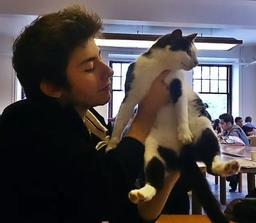In Turkish we use the word şey often, and in many situations.
Şey literally means thing. However in Turkish Şey can replace almost anything. And this is not an exaggeration; şey can replace: whole sentences, clauses, subjects, objects, whole words, parts of words, etc.
Şey is used when something is eluding you when you're trying to say something. For example, imagine that last night you watched a documentary about dik-diks (incredibly cute animals, look it up). And today you're at work, you want to tell your co-worker about this new animal that you learned about last night. But you just can't remember the name of the animal. It is as if it escaped from your mind. It would go something like this in Turkish:
"Dün akşam bir belgesel izledim şeyler hakkında. Neydi ya? Böyle ufak sevimli savanda yaşayan şeyler... Heh dikdikler!
Last night, I watched a documentary about the thingies... What was it? They're like, little cute, living-in-the-savannah thingies... Ah, dik-diks!
In the case above, şey replaces a noun. Now let's see an example for a verb:
| [Lit.] Did you thing'd the trash? | Çöpü şey yaptın mı? |
| Did you take out the trash? | Çöpü çıkardın mı? |
As you can see, when used with a verb, it takes the auxiliary verb yapmak in order to be conjugated. You cannot say şeyiyor or şeyecek, so you need an auxiliary verb to do that.
Here's an example for replacing a clause:
| We haven't met up with Ceren since the thingie. | Ceren'le şeyden beri görüşmedik. |
| Ceren'le beraber gittiğimiz tatilden beri görüşmedik. | We haven't met up with Ceren since the vacation we went on together. |
Here, şey replaces the whole going on vacation together. Move onto practice to see more examples and strengthen your understanding.

